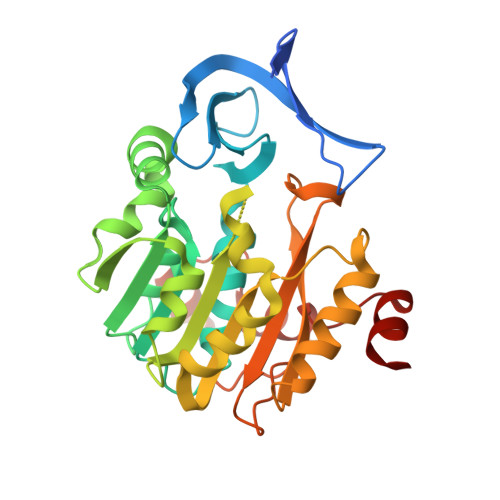Binding and inhibition of human spermidine synthase by decarboxylated S-adenosylhomocysteine.
Seckute, J., McCloskey, D.E., Thomas, H.J., Secrist, J.A., Pegg, A.E., Ealick, S.E.(2011) Protein Sci 20: 1836-1844
- PubMed: 21898642
- DOI: https://doi.org/10.1002/pro.717
- Primary Citation of Related Structures:
3RW9 - PubMed Abstract:
Aminopropyltransferases are essential enzymes that form polyamines in eukaryotic and most prokaryotic cells. Spermidine synthase (SpdS) is one of the most well-studied enzymes in this biosynthetic pathway. The enzyme uses decarboxylated S-adenosylmethionine and a short-chain polyamine (putrescine) to make a medium-chain polyamine (spermidine) and 5'-deoxy-5'-methylthioadenosine as a byproduct. Here, we report a new spermidine synthase inhibitor, decarboxylated S-adenosylhomocysteine (dcSAH). The inhibitor was synthesized, and dose-dependent inhibition of human, Thermatoga maritima, and Plasmodium falciparum spermidine synthases, as well as functionally homologous human spermine synthase, was determined. The human SpdS/dcSAH complex structure was determined by X-ray crystallography at 2.0 Å resolution and showed consistent active site positioning and coordination with previously known structures. Isothermal calorimetry binding assays confirmed inhibitor binding to human SpdS with K(d) of 1.1 ± 0.3 μM in the absence of putrescine and 3.2 ± 0.1 μM in the presence of putrescine. These results indicate a potential for further inhibitor development based on the dcSAH scaffold.
Organizational Affiliation:
Department of Chemistry and Chemical Biology, Cornell University, Ithaca, New York 14853, USA.















